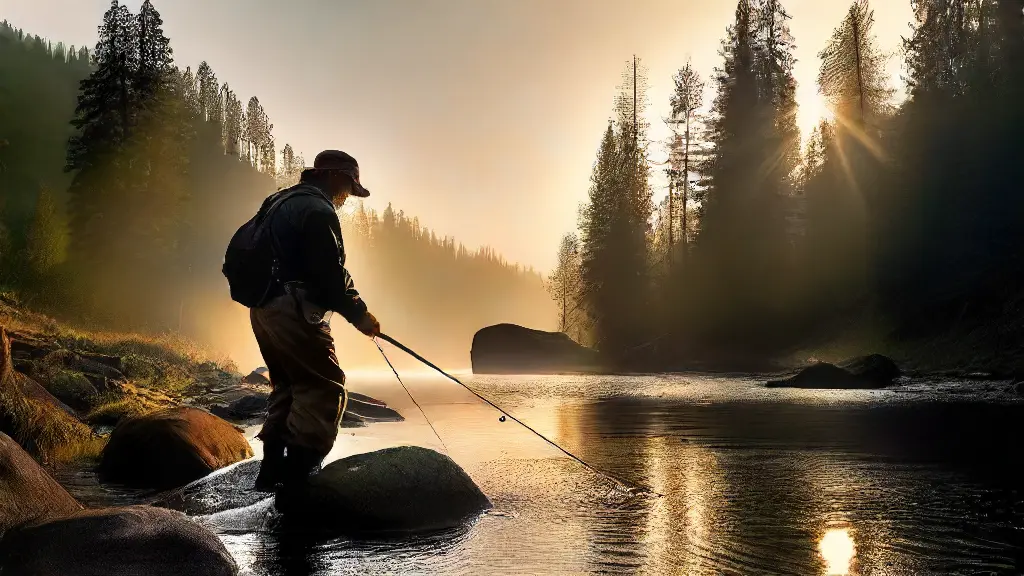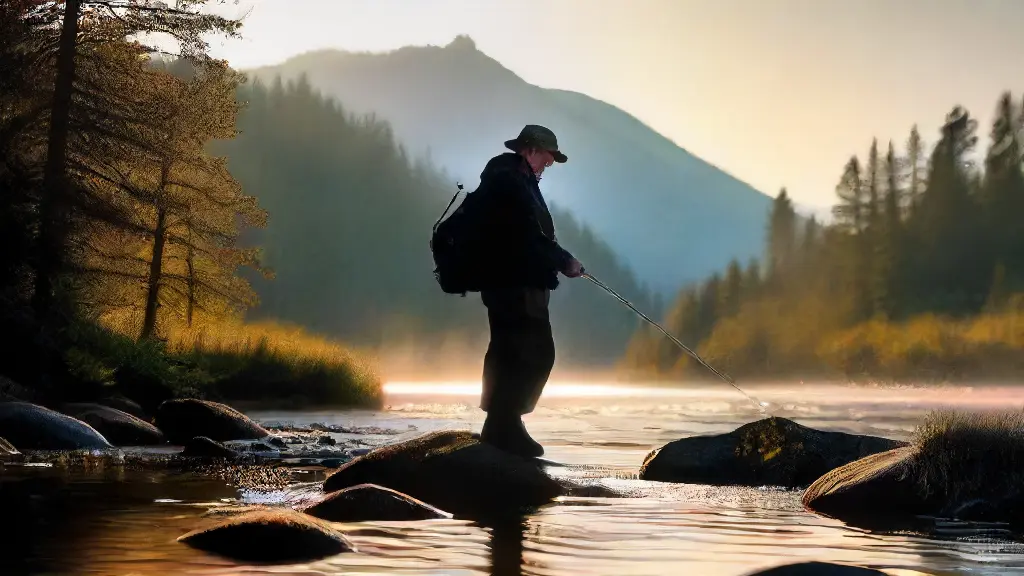How to Choose Rods for Fishing in Rocky Areas

Fishing in rocky areas demands a special kind of skill and the right gear, where even small mistakes can lead to lost lures and broken rods.
The right rod can make all the difference in navigating strong currents and battling feisty fish in rocky areas. While many rods can perform well in various environments, some are specifically designed to tackle the unique challenges of rocky, structure-filled waters.
When it comes to structural fishing, the material and construction of the rod play a crucial role in determining its performance. A rod constructed with durable materials and a robust design can withstand the rigors of boulder fishing and the underwater structure.
Choosing Rods for Rocky Areas
Fishing expeditions in rugged terrain call for the perfect combination of strength and finesse. A well-crafted rod is crucial to success, as it must be able to withstand the challenges of rocky areas, where sudden bites and strong currents demand a high level of responsiveness and durability.
Rods made from graphite, fiberglass, or a combination of both offer excellent strength and durability, allowing them to absorb shock and withstand sudden bites.
Graphite rods provide sensitivity and flexibility, while fiberglass rods offer increased durability and resistance to breakage.

Finding the Right Materials
- Rods made from graphite, fiberglass, or a combination of both offer excellent strength and durability. Graphite rods provide sensitivity and flexibility, while making it easier to set hooks and fight fish.
Understanding Rocky Terrain
Few experiences in the great outdoors test an angler’s skills quite like navigating the rugged shores of the ocean, where the relentless power of the waves and the unforgiving texture of the rocks demand a deep understanding of the fishing technique.
Defining rocky terrain, it’s any area where large rocks, boulders, and cliffs dominate the shoreline, creating a complex and dynamic environment that requires a deep understanding of fish behavior and movement.
Challenges of fishing in rocky areas include the difficulty of wading through shallow water, avoiding sharp rocks and drop-offs, and navigating strong currents and waves.
Proper equipment selection is crucial when fishing in rocky terrain, as it allows anglers to present baits and lures effectively and set hooks quickly and confidently. As I navigated the rocky terrain, I grasped the familiarity of the sea wall’s presence, and the pier’s rhythmic creaking seemed to harmonize with the gentle flow of the stream, river, lake, and ocean, where my journey had ultimately led me to master the various fishing techniques for both saltwater and freshwater species,.
Why Rod Material Matters
As you launch your boat into the water, the thrill of the catch is just around the bend. A well-designed rod can be the difference between landing a monster fish and experiencing a fishing trip that falls short of expectation.
The choice of rod material plays a significant role in the overall success of your angling tactics.
While some anglers may overlook this crucial aspect, it’s essential to understand the characteristics of different materials and how they impact the performance and durability of your rod.
Handling and Durability
Rod material affects how well the rod can handle the forces of currents and rapids, making it essential to choose a material that can withstand the demands of your fishing environment. Let’s take a closer look at some of the most popular rod materials and their characteristics, as well as the key considerations anglers must keep in mind when selecting the perfect rod, which is often influenced by their fishing strategy, angling tactics, currents, tides, and rapids, and the specific fishing rod brands and models, such as Shimano and St. Croix, that they prefer.Rod Action and Recovery Explained
With the perfect blend of technique and equipment, fly fishing anglers can unlock the secrets of their sport and reel in the big catch. Rod action and recovery are critical components in this pursuit, and understanding the intricate relationships between blank materials, guides, and handles can make all the difference.
A rod’s action is determined by its blank material, guides, and handle, which work together to produce a specific feel and response.
A fast rod action, for instance, is ideal for targeting aggressive fish in rocky shorelines, while a slow rod action is better suited for delicate presentations in structured water.
When choosing a rod weight class, anglers must consider the size and species of fish they plan to catch. A heavier rod is often necessary for larger or more powerful fish, whereas a lighter rod is better suited for smaller or.
What to Expect from Rod Sensitivity
Finding the perfect harmony between technique, patience, and gear is the ultimate goal of fishing. A crucial element in achieving this balance is the ability to detect subtle vibrations and movements, which allows anglers to respond quickly and catch more fish.
I.
Introduction to Rod Sensitivity
Definition of Rod Sensitivity: Rod sensitivity refers to a fishing rod’s ability to transmit subtle vibrations and movements from the line to the angler’s hands, allowing for better detection of bites and precise control over the catch.
Importance of Rod Sensitivity: A rod’s sensitivity is crucial in various fishing scenarios, as it enables anglers to respond quickly to bites, making it easier to land fish without losing them
Rod Construction for Structural Fishing
For many anglers, the thrill of reeling in a catch is matched only by the thrill of exploring new fishing grounds. Venturing into structured water and rocky areas can be a daunting task without the right gear.
When fishing in these challenging environments, a rod that is both sensitive and durable is essential.
This is particularly true when it comes to tackle selection, as the wrong gear can lead to lost opportunities and damaged equipment.
Materials play a crucial role in rod construction, and high-modulus graphite and fiberglass are two popular options. Fishing tips suggest that high-modulus graphite provides maximum sensitivity and strength, making it ideal for detecting even the lightest bites.
On the other hand, fishing advice recommends fiberglass for its added durability in rough terrain, making it a great choice for rocky areas. A balanced rod is another critical aspect of rod construction.
Rod Material Characteristics Best For High-Modulus Graphite Maximum sensitivity and strength Detecting lightest bites Fiberglass Added durability in rough terrain Rocky areas Balanced Rod Essential for rod construction Challenging fishing environments Balancing Rod Power and Length
For many anglers, the thrill of reeling in a big catch is often attributed to a combination of luck, skill, and the right equipment. Selecting the perfect rod can be a daunting task, particularly when considering the delicate balance between power and length.
Fishing strategies can be greatly impacted by the type of terrain you’re fishing in, with rocky areas requiring a more delicate approach, while structured water calls for a sturdier rod.
When it comes to fish behavior, understanding how they react to different water conditions and weather conditions is crucial, and the right rod can make all the difference in catching your target species.
Angling techniques such as bottom fishing or trolling require a specific type of rod, and choosing the wrong length or power can result in lost fish or lack of success.
.
Best Budget Multi-Species Rods
Best Rods for Multi-Species Ice Fishing


